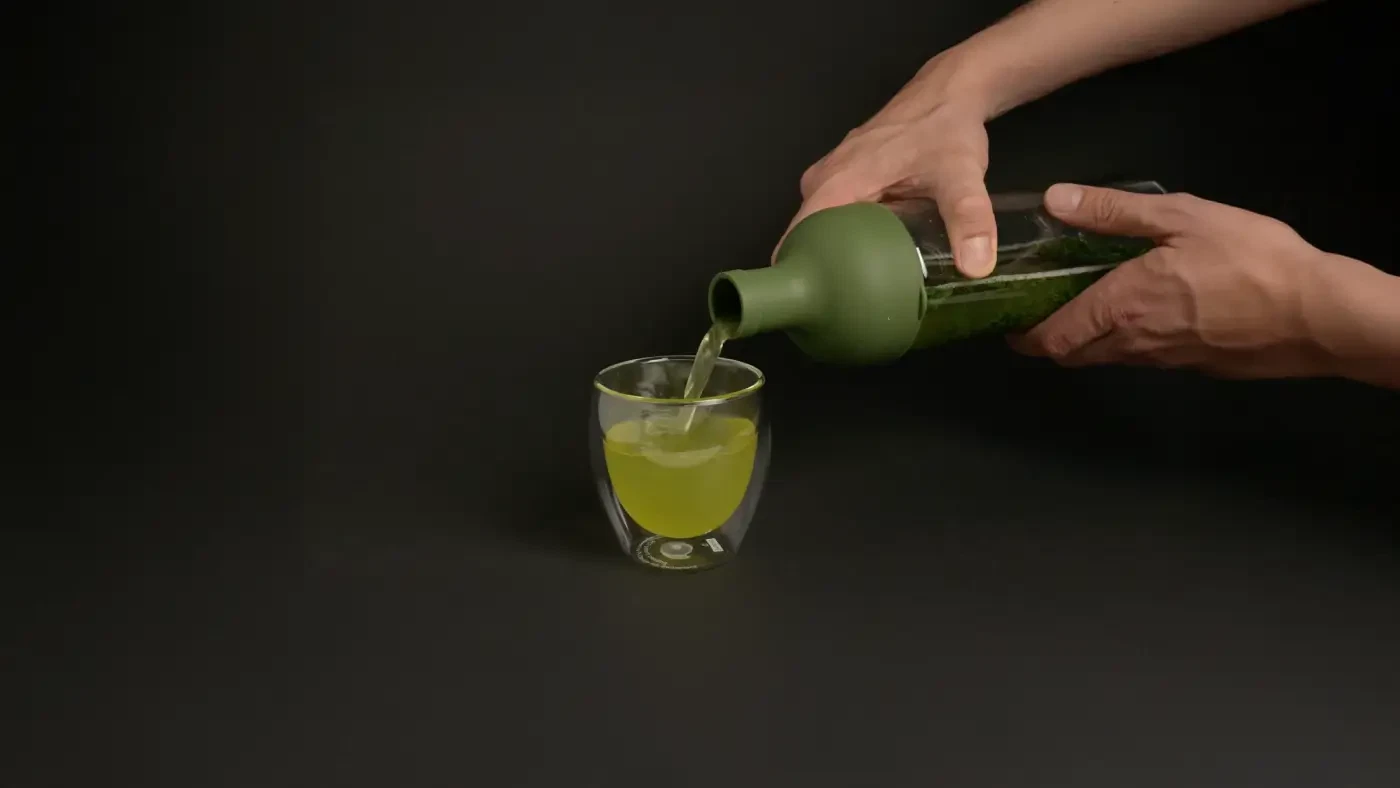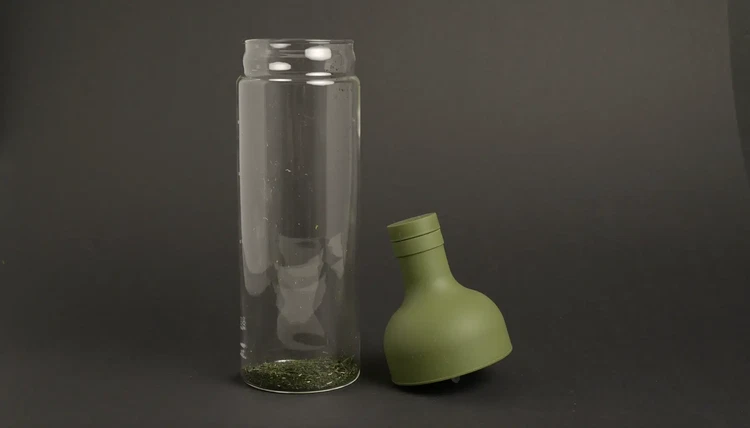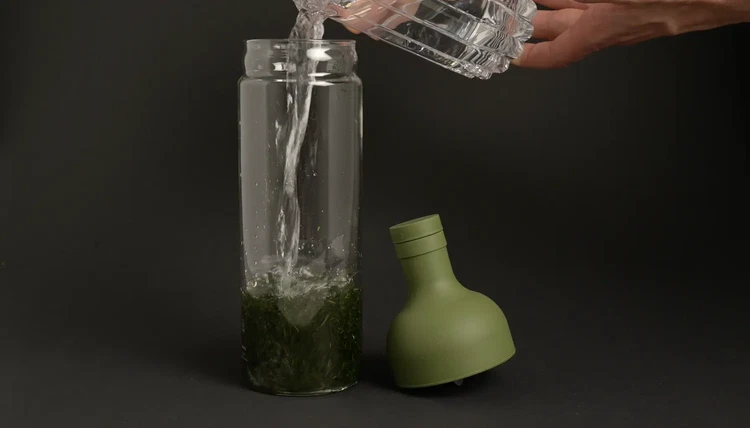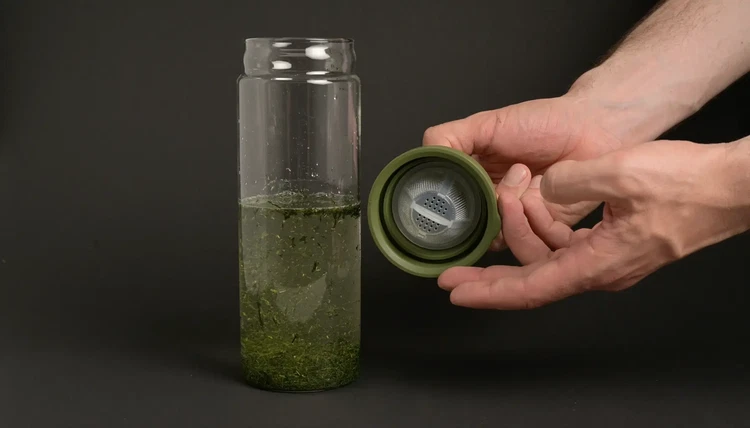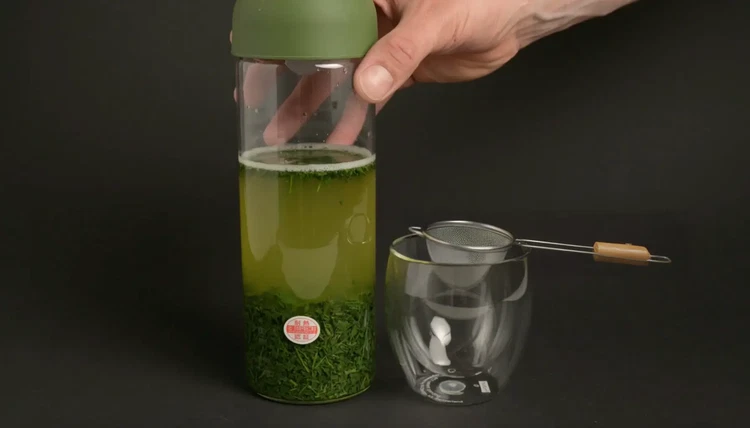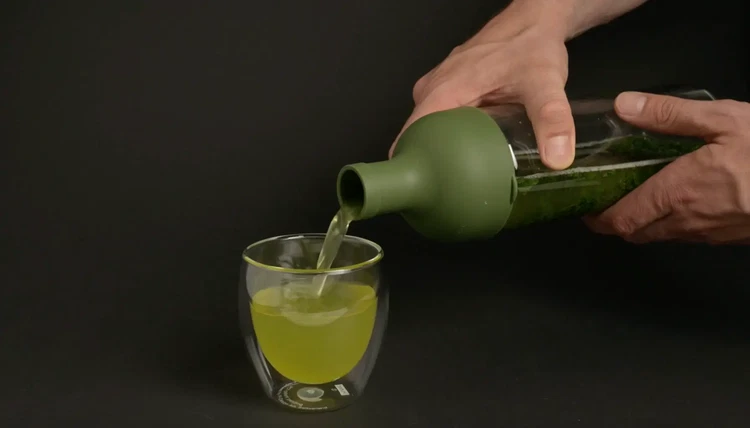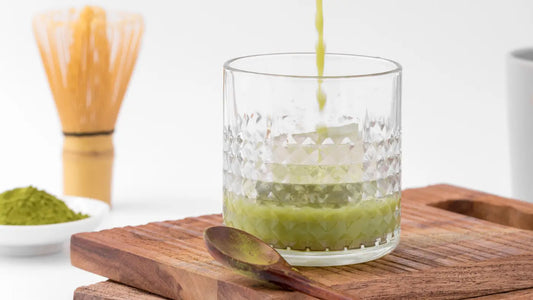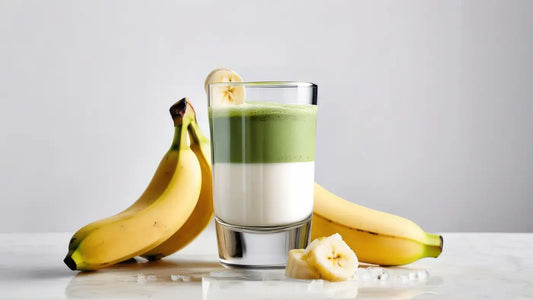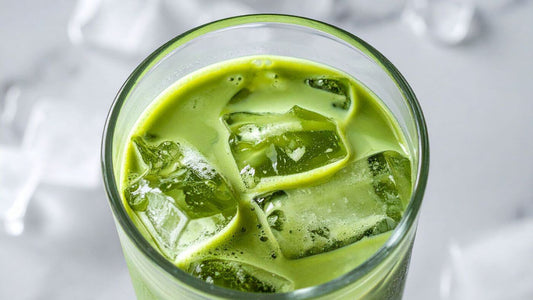
Kooridashi: Ice Brewing Gyokuro
Ice brewing gyokuro is an even more extreme version of gyokuro cold brew. This method is called “Kooridashi” in Japanese, whereas regular cold brew gyokuro green tea would be called “Mizudashi”.
When you’re ice brewing gyokuro, fill a teapot with ice cubes and then sprinkle 5 grams of gyokuro leaves on top. As the ice melts, it will brew the gyokuro leaves with incredibly cold water, just above freezing.
How to Make Gyokuro Iced Tea
If you want to learn how to make gyokuro iced tea, we recommend not using the kooridashi method, but instead following the gyokuro cold brew instructions and serving the tea over ice.
The flavor of the ice brew gyokuro can be a bit powerful at first, and it’s best to start with something a little smoother.
Why You Should Cold Brew Gyokuro Overnight in a Pitcher.
We have found that when you cold brew gyokuro overnight in a pitcher, you can sometimes extract more flavor than you bargained for.
If the tea leaves are left in for too long, the tea can become bitter. The best time for cold brewing gyokuro is around 3 hours, but if you are okay with stronger tea, you can try it overnight!
Gyokuro Cold Brew Benefits
Even without cold brewing gyokuro, there are many Gyokuro tea benefits. The brewing temperature you use to prepare green tea can have a huge effect on not only the taste of the infusion but also the chemical composition of the final brew. The reason for this is that, unlike matcha, leaf tea is an extraction. Different gyokuro brewing parameters will extract different chemical components of green tea.
Less Bitter
Catechins, for example, are some of the more bitter components of green tea. These are extracted at higher temperatures or after longer brewing times. These bitter flavors can explain why your green tea is bitter. The bitterness will quickly overtake the flavor of the tea, causing you to miss out on a lot of the more subtle flavors.
If you brew a tea too hot or for too long, you will extract more of these catechins and end up with a tea that is extremely bitter. When cold brewing gyokuro, you end up with less of the bitter catechins, but plenty of the sweet and savory theanine.
Lower Caffeine Level
Caffeine is another chemical compound that tends to be extracted at a higher temperature. As a result, cold brewed teas will contain less caffeine than their warm counterparts. This can be used to your advantage, as cold brew gyokuro can be enjoyed later in the day without keeping you up all night.
Gyokuro is one of the teas with the most caffeine, and if you are sensitive to caffeine, you may want to avoid drinking it hot. Cold brewing gyokuro can make the tea more accessible to people who normally avoid high caffeine teas.
Final Thoughts on Cold Brewing Gyokuro
Cold brew gyokuro green tea is a wonderful and healthy beverage to enjoy on a warm day. It can also provide plenty of benefits when it comes to health and flavor. If you are interested in trying your own cold brew gyokuro, you can find our pick for the best one below!
The Best Gyokuro for Cold Brew
After traveling around Japan and tasting dozens of different gyokuro teas, we found that the very best are produced by Mr. Sakamoto in Shibushi. He even likes to greet us with a pitcher of gyokuro cold brew, which he serves in a champagne glass.
If you want to recreate this luxurious tea experience at home, you can try out his assortment of teas and prepare them as a gyokuro cold brew.
However, if you're looking for the best gyokuro available on the market, we wrote an article with a detailed guide to find the best gyokuro in the world. It also includes our personal top 4 of the best gyokuro. Here is the link for the article 👉 What’s the Best Gyokuro in the World?

